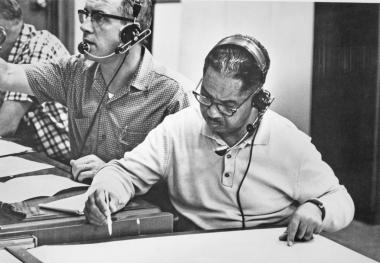
During World War II, Vance Hunter Marchbanks, Jr. (1905–1988), was the flight surgeon for the 332nd Fighter Group of the Tuskegee Airmen. In 1962, as a member of a NASA team at a tracking station in Kano, Nigeria, he monitored the medical status of astronaut John Glenn aboard Friendship 7 during his Mercury flight into earth orbit. After retiring as a colonel from the U.S. Air Force, he worked in private industry developing life support systems for NASA's Apollo program.
In addition to his work in aerospace, Vance contributed research to the Air Force about Sickle Cell Disease that ended a long-standing screening for Sickle Cell Trait that, if present, had resulted in men being discharged from service.
Born into a military family at Fort Washakie, Wyoming, Vance received his education wherever his Army father was stationed, including Essex Junction, Vermont, Chicago, Illinois, Washington, D.C., and Nashville, Tennessee. He graduated from the University of Arizona in Tucson and received his medical degree from Howard University in Washington, D.C.
He died in Connecticut in 1988 and is buried at Arlington National Cemetery in Arlington, Virginia.
